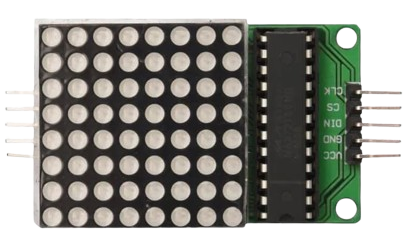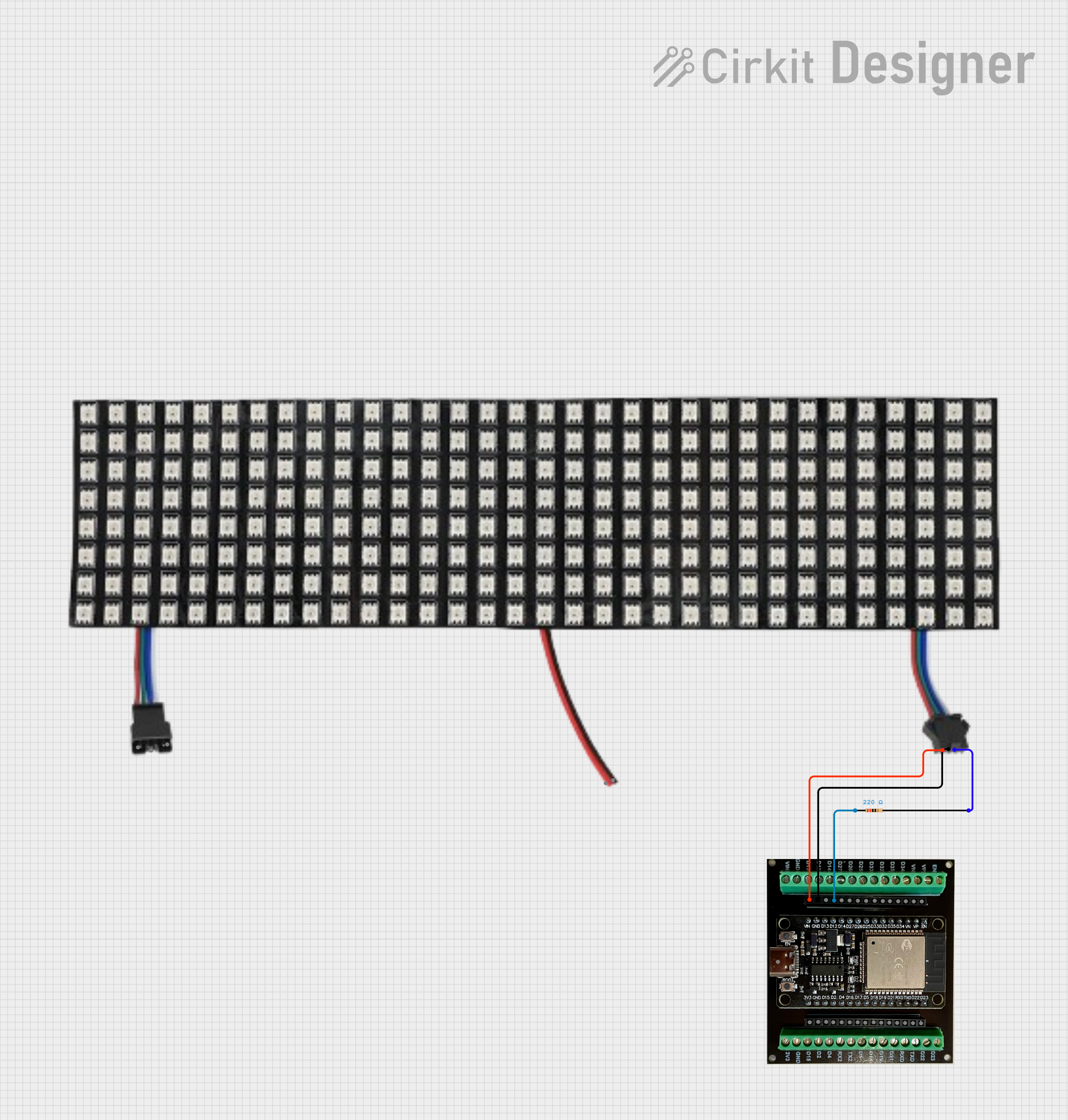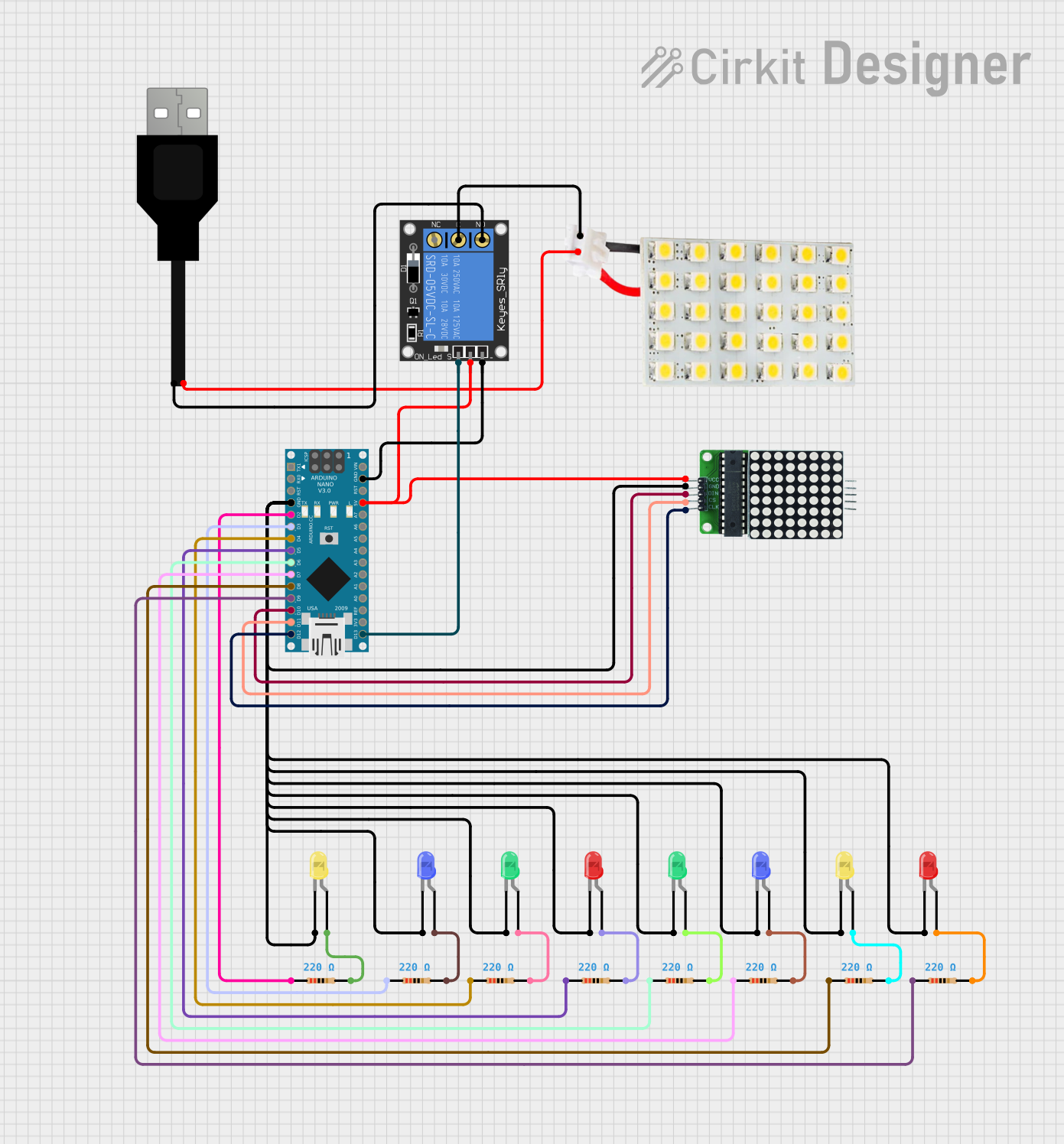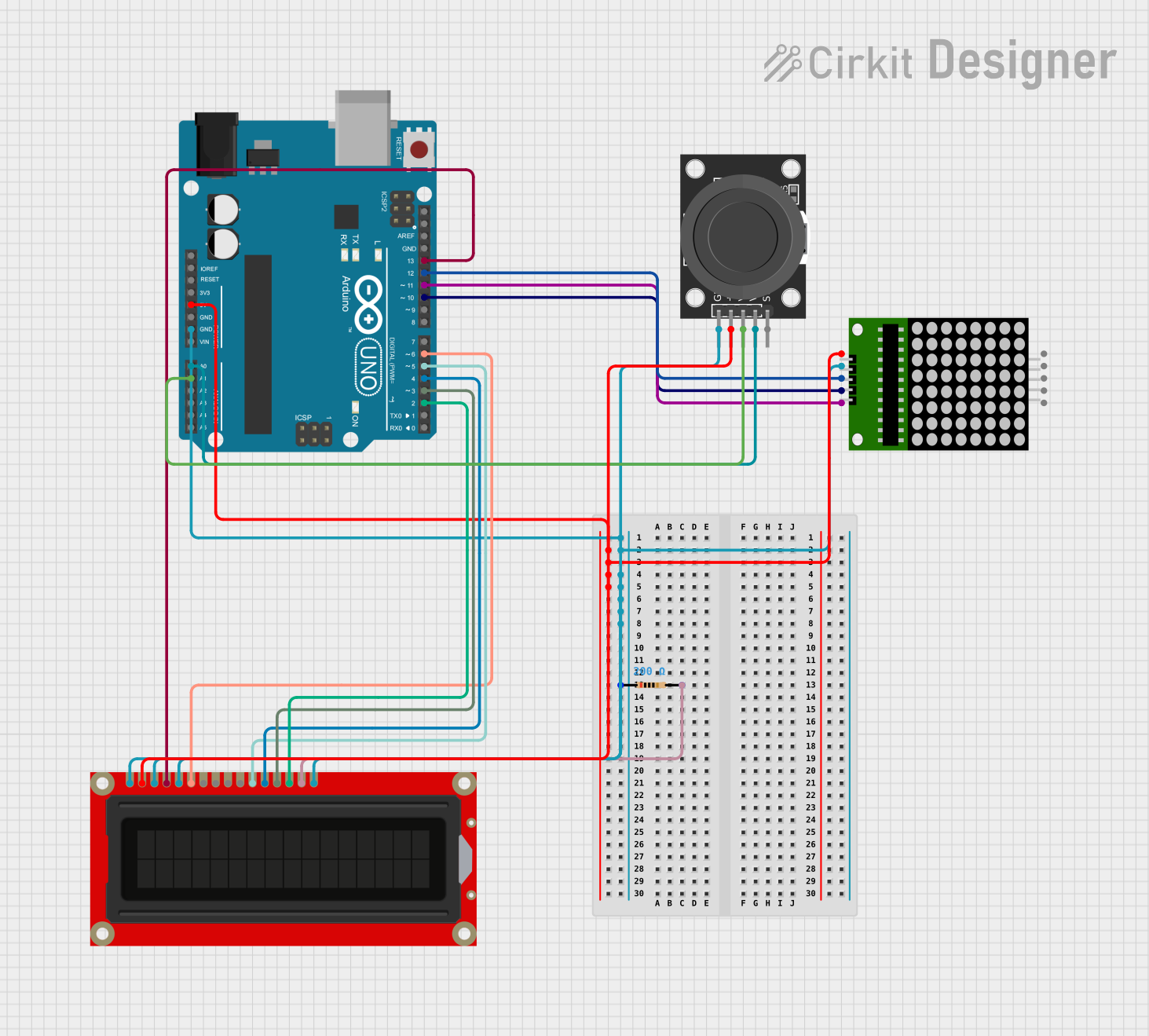
How to Use LED Matrix: Examples, Pinouts, and Specs

 Design with LED Matrix in Cirkit Designer
Design with LED Matrix in Cirkit DesignerIntroduction
An LED matrix is a versatile electronic component that consists of a grid of LEDs arranged in rows and columns. It is commonly used in various applications such as digital clocks, advertising displays, and as a user interface for electronic devices. By controlling each LED individually, users can create patterns, text, and images for visual output.
Explore Projects Built with LED Matrix

 Open Project in Cirkit Designer
Open Project in Cirkit Designer
 Open Project in Cirkit Designer
Open Project in Cirkit Designer
 Open Project in Cirkit Designer
Open Project in Cirkit Designer
 Open Project in Cirkit Designer
Open Project in Cirkit DesignerExplore Projects Built with LED Matrix

 Open Project in Cirkit Designer
Open Project in Cirkit Designer
 Open Project in Cirkit Designer
Open Project in Cirkit Designer
 Open Project in Cirkit Designer
Open Project in Cirkit Designer
 Open Project in Cirkit Designer
Open Project in Cirkit DesignerTechnical Specifications
General Characteristics
- Manufacturer: Test
- Part ID: Test
- Display Type: LED Matrix
- LED Color: (Typically red, green, blue, or white; specify if known)
- Operating Voltage: (Typically 3.3V to 5V; specify if known)
- Maximum Current per LED: (Specify if known)
- Matrix Configuration: (e.g., 8x8, 16x16; specify if known)
Pin Configuration and Descriptions
| Pin Number | Name | Description |
|---|---|---|
| 1 | VCC | Connect to the power supply (3.3V to 5V) |
| 2 | GND | Connect to the ground of the power supply |
| 3 | DIN | Data input pin for sending LED data to the matrix |
| 4 | CS | Chip select, used to enable and disable the matrix |
| 5 | CLK | Clock pin, used to synchronize data transmission |
Note: The actual pin configuration may vary depending on the specific LED matrix model. Refer to the manufacturer's datasheet for exact details.
Usage Instructions
Connecting to a Circuit
- Power Supply: Connect the VCC pin to a suitable power supply (3.3V to 5V) and the GND pin to the ground.
- Data Input: Connect the DIN pin to the microcontroller's data output pin.
- Chip Select: The CS pin is used to select the LED matrix when multiple devices are connected to the same microcontroller.
- Clock: Connect the CLK pin to the microcontroller's clock output pin.
Best Practices
- Use current-limiting resistors to prevent damage to the LEDs.
- Avoid exceeding the maximum voltage and current ratings.
- Implement proper heat dissipation techniques if the matrix is used at high brightness levels for extended periods.
- Use a microcontroller with sufficient memory and processing power to handle the LED matrix's data requirements.
Example Code for Arduino UNO
#include <LedControl.h> // Include the LedControl library
// Pin configuration for the LED matrix
int DIN_PIN = 7;
int CS_PIN = 6;
int CLK_PIN = 5;
// Create a new LedControl object
LedControl lc = LedControl(DIN_PIN, CLK_PIN, CS_PIN, 1);
void setup() {
// Initialize the LED matrix
lc.shutdown(0, false); // Wake up the display
lc.setIntensity(0, 8); // Set brightness level (0 is min, 15 is max)
lc.clearDisplay(0); // Clear display register
}
void loop() {
// Display a simple pattern on the LED matrix
for (int row = 0; row < 8; row++) {
for (int col = 0; col < 8; col++) {
lc.setLed(0, row, col, true); // Turn on LED at (row, col)
delay(200);
lc.setLed(0, row, col, false); // Turn off LED at (row, col)
}
}
}
Note: The LedControl library is used for controlling LED matrices with Arduino. Make sure to install it using the Arduino Library Manager before compiling the code.
Troubleshooting and FAQs
Common Issues
- LEDs Not Lighting Up: Ensure that the power supply is correctly connected and within the specified voltage range. Check the wiring of DIN, CS, and CLK pins.
- Flickering Display: This may be due to insufficient power supply or loose connections. Verify the power source and secure all connections.
- Incorrect Display Patterns: Double-check the code for any logical errors. Ensure that the correct pins are defined and that the library is properly included.
FAQs
Q: Can I control each LED individually? A: Yes, each LED can be controlled individually to display various patterns and characters.
Q: How do I connect multiple LED matrices? A: Multiple LED matrices can be daisy-chained by connecting the output pins of one matrix to the input pins of the next. Adjust the software accordingly to manage multiple devices.
Q: What is the maximum number of LED matrices I can control with an Arduino? A: The number is limited by the number of available pins and memory on the Arduino. Using shift registers or LED drivers can help control more matrices efficiently.
Q: Can I use a different microcontroller instead of an Arduino? A: Yes, any microcontroller with sufficient digital I/O pins can be used to control an LED matrix, provided you have the appropriate library or write your own control code.
For further assistance, please refer to the manufacturer's datasheet and technical support resources.